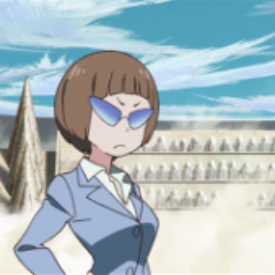Few poems have been quoted, misquoted and satirized as much as Poe’s The Raven, and in truth it’s style and gothic theme are easy to satirize. Poe’s most ardent wish was to be known as a poet and indeed The Raven brought him the literary success that no other of his writings had. The Raven is written on a theme that Poe used over and over again in his work – loss and grief.
Poe’s other poems, of which The Conqueror Worm is my personal favourite, all talk of the inevitability of loss and of grief and of the ineffectuality, indifference or downright hostility of the angels and presumably of what he perceived to be the Divine. In Annabel Lee he says outright that the angels envied the narrator and his beloved Annabel Lee for their happiness and killed the unfortunate heroine for spite because of it.
In the present day, however, his poetry is not what he is remembered for – it’s the Horror Stories.
Poe’s horror stories are carefully constructed to be remote in place and/or time and he goes to great lengths to create and sustain this atmosphere by using language that is even more antiquated than that in general use at the time. His vivid descriptions of such places as the catacombs in The Cask of Amontillado bring the reader inside his gloomy and frightening world.
The themes of the horror stories are things like – revenge, loss of love, premature burial and the punishment of individuals at the whim of the Gods.
The stories of revenge are chilling and are perhaps his way of getting back at a world which treated him rather harshly. The exact worldly events which sparked them aside, he uses his minute attention to detail and his amazing powers of description also to give the reader the full experience of malice or cruelty justly punished.
In Hop Frog we are taken to a court which is by implication remote in time in an unknown place. The main character, Hop Frog, is as dwarf who is also a cripple and is kept as a jester to a king who is noted for his love of jokes. Hop Frog and his best friend, a female dwarf but very beautiful and a talented dancer, were stolen from their home village and sent to the king as a gift.
The king’s ministers were largely chosen for their ability to tell jokes or play practical jokes and for their resemblance to the king who is corpulent and, it is implied, not very bright. Hop Frog is often a source of amusement to the king and his ministers for his difficulty in movement and for his inability to drink wine without becoming very drunk and mentally confused.
The story begins with the king planning a masquerade and trying to think of a costume for it. He asks Hop Frog for his advice and then makes him drink a goblet of wine, which, as usual, makes Hop Frog drunk and incapable. The king is about to give the dwarf another goblet of wine and the little dancer begs him on her knees not to. He slaps her away and throws the goblet of wine in her face, at which time Hop Frog suddenly says he has an idea for a costume for the king and his minister – he induces them to be doused in tar and flax to look, supposedly, like orangutans. He chains them together and wearing the costumes they enter the party room at midnight for maximum effect. The courtiers are suitably frightened and aghast at the beasts.
Hop Frog uses a chain from a chandelier which has been removed, to draw them up too far for any of the party-goers to help them, then sets them on fire with a torch which he brings closer and closer to them under the pretext of trying to see who they are. The torch lights the flax and tar and the king and his ministers are left to burn to death suspended high above the ballroom floor. Hop Frog and his companion escape and aren’t seen again. The savagery of the revenge is blood curdling and a warning to people who would treat others with contempt and violence. Others of his revenge stories include the The Tell-Tale Heart and the afore mentioned, A Cask of Amontillado in which the narrator walls his enemy up in the catacombs under the narrator’s house. We aren’t told what the revenge is for, but it is, once again, horrible.
At the beginning of the 19th century death was a common occurrence there was no certain way of telling whether the person was actually dead except such clumsy devices as seeing if the person was still breathing by placing a mirror over the mouth of the him/her and seeing if s/he fogged up the mirror with her/his breath. Since many of the deaths of the periods were from influenza, and such things as typhoid fever and tuberculosis, so in Poe’s time premature burial was, if not common, certainly a possibility.
Poe’s tales of premature burial such as the The Fall of the House of Usher are true horror. It is possible to visualize Roderick Usher’s sister in her grave wrappings so complete is the description Poe offers.
One of the other common themes is the premature loss of a loved one, in Ligeia the beautiful Ligeia is not buried prematurely but conquers death through sheer will and takes over the body of the narrator’s second wife – much to his joy.
Edgar Allan Poe, in true horror tradition writes about the things we are afraid of – being confined in a very small space and slowly smothering or having to fight one’s way out of a coffin or crypt. He also writes of our secret desires in his revenge stories – there is something satisfying in the death of the king or of the hated ‘friend’. One other theme is perhaps our worst and most secret fear – loss of loved ones.
The movies made of his films are everything a good horror fan loves strange settings and with lurid colours and terrible events.
Poe’s Science Fiction and Detective fiction still stand with the best these genres can offer. He was an extraordinary writer whose versatility makes him worth reading even today.
IF you haven’t had the ‘pleasure of his company’ so to speak – try him for a laugh or a scream there are few better at either one.










Recent Comments